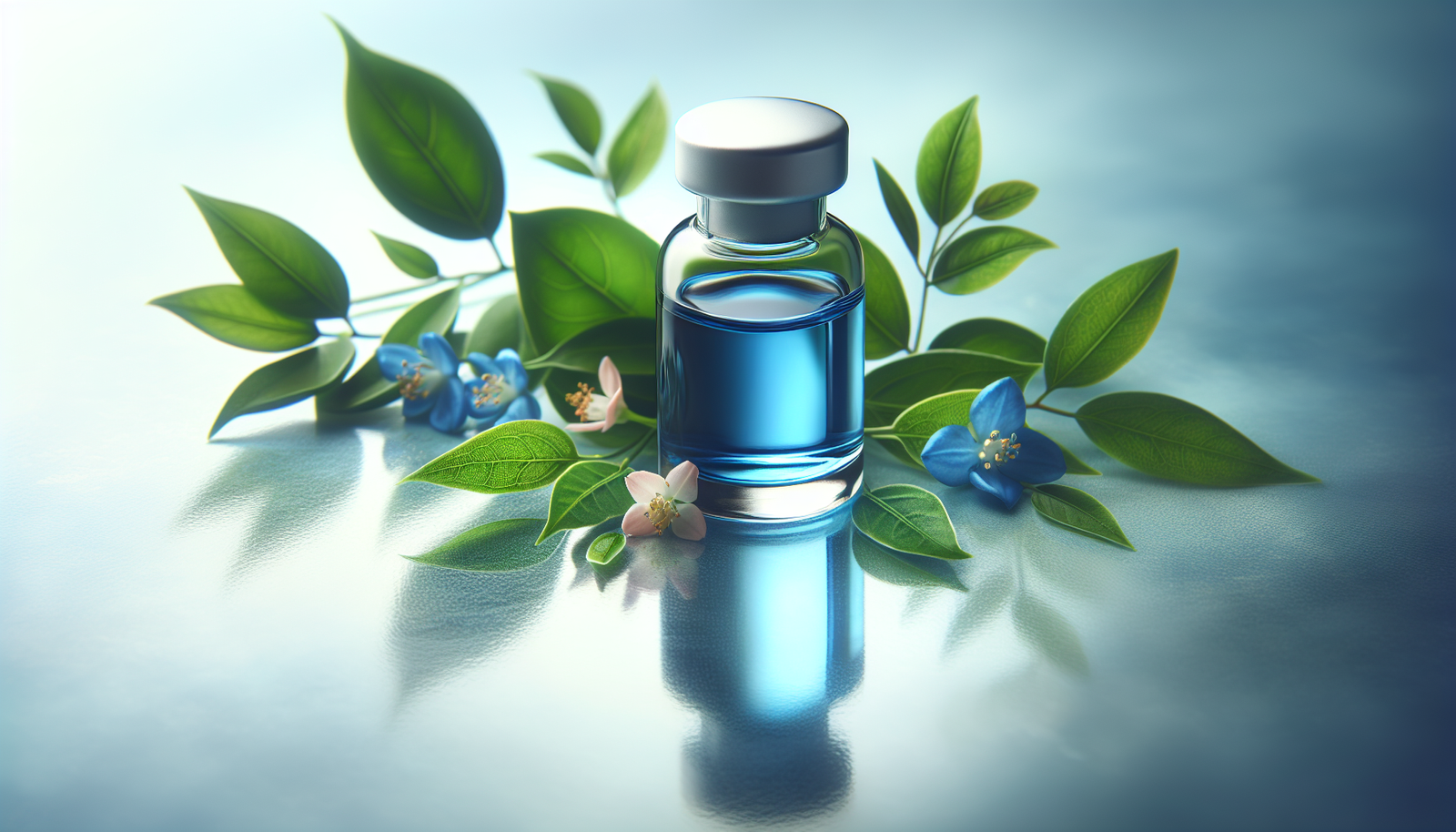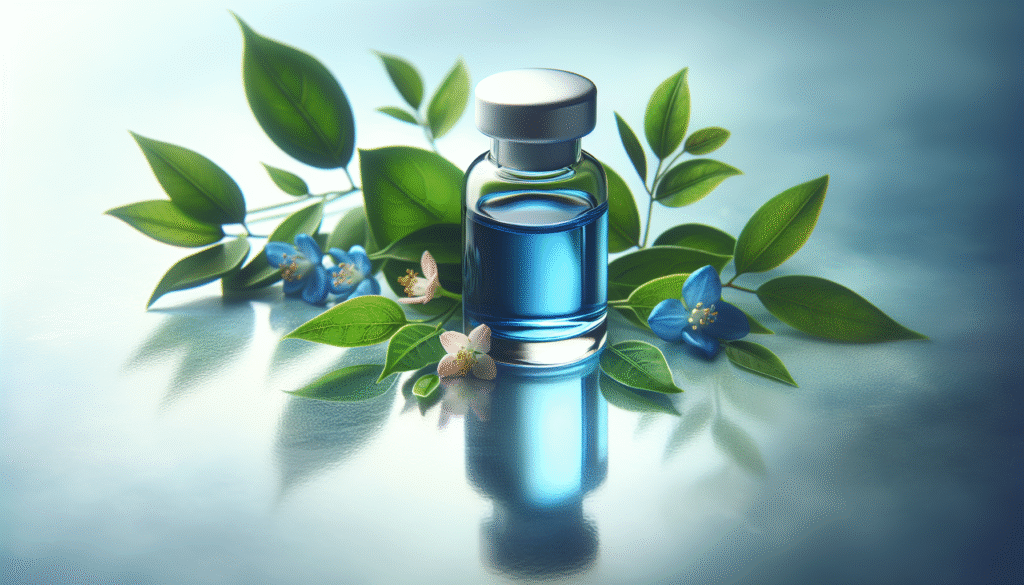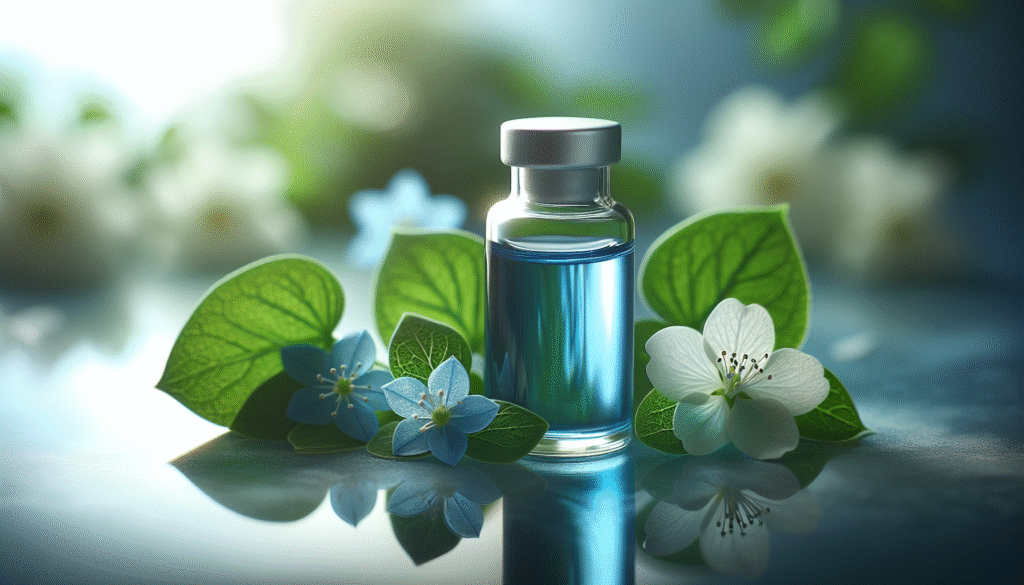
Have you ever considered how a single compound can impact skin health significantly? Methylene blue, primarily known for its role in biology and medicine, is emerging as a fascinating ingredient in skincare. Current studies have begun to illuminate its potential to aid skin repair and rejuvenation. This article will investigate the science behind methylene blue, its application in skin health, and what research indicates about its effectiveness.
Understanding Methylene Blue
Methylene blue is a synthetic dye with a rich history, initially developed in the 19th century for use in histology and as a medication. Its molecular structure allows it to penetrate various biological membranes, making it a candidate for diverse applications, including skin repair.
Chemical Composition and Properties
At its core, methylene blue is thiazine dye, characterized by its distinct blue color. Formed by a combination of benzene rings and a nitrogen-containing group, its structure not only imparts color but also allows for various biochemical interactions. One notable property of methylene blue is its role as an electron donor, facilitating redox reactions that may be beneficial in the context of skin repair.
Mechanisms of Action in Skin Health
Methylene blue exhibits multiple mechanisms of action that contribute to its potential benefits for skin health. Some of these include:
- Antioxidant Activity: It helps neutralize free radicals, which can lead to skin aging and damage. By counteracting oxidative stress, methylene blue may play a role in maintaining youthful skin.
- Anti-inflammatory Effects: Inflammation is a common contributor to many skin conditions, including acne and eczema. Methylene blue has been shown to possess anti-inflammatory properties, which could help alleviate these issues.
- Cellular Signaling: Research indicates that methylene blue may influence signaling pathways within cells, potentially enhancing cellular function and promoting repair processes.
The Role of Methylene Blue in Skin Repair
Numerous studies are investigating methylene blue’s role in skin repair, focusing on conditions such as wounds, scars, and photoaging. Understanding how this compound interacts with skin at a molecular level reveals its promise.
Wound Healing
Wound healing is a complex process involving multiple stages, including hemostasis, inflammation, proliferation, and remodeling. Methylene blue has been studied for its impact on various phases of wound healing.
Cellular Proliferation
Research shows that methylene blue can enhance keratinocyte proliferation, crucial for re-epithelialization during wound healing. Its influence on fibroblasts also aids in collagen synthesis, integral for tissue repair.
Angiogenesis
Another critical aspect of wound healing is the formation of new blood vessels (angiogenesis). Methylene blue has shown potential in stimulating angiogenic processes, improving nutrient and oxygen supply to the healing area.
Scarring and Hyperpigmentation
Scars and hyperpigmentation can be frustrating outcomes of skin injuries. Methylene blue’s properties may play a role in minimizing these issues.
Melanin Regulation
Methylene blue may help regulate melanin production, targeting the overactivity that leads to hyperpigmentation. By influencing the activity of melanocytes, it could provide a therapeutic approach to managing uneven skin tone.
Scar Tissue Remodeling
Scar tissue often differs in texture and appearance from surrounding skin. Methylene blue’s ability to enhance fibroblast activity may facilitate better remodeling of scar tissue, leading to improved cosmetic outcomes.

Scientific Studies on Methylene Blue
In Vitro Studies
Many initial findings regarding methylene blue’s potential in skin repair come from in vitro studies. These controlled lab settings allow for precise examination of cellular responses to methylene blue exposure.
Cellular Response to Methylene Blue
In vitro studies typically involve applying methylene blue to cell cultures, observing changes in proliferation, apoptosis, and metabolic activity. Results generally indicate enhanced cellular growth and vitality, particularly within skin-related cells such as fibroblasts and keratinocytes.
| Study | Findings |
|---|---|
| A study on keratinocyte proliferation | Methylene blue significantly increased cell growth rates compared to control groups. |
| Research on fibroblast activity | Enhanced collagen synthesis was observed with methylene blue treatment. |
Animal Studies
Research has also expanded into animal models to assess the efficacy and safety of methylene blue for skin repair. These studies better simulate the complex interactions of biological systems.
Wound Healing in Animal Models
Animal studies demonstrate methylene blue’s potential in enhancing wound healing. In particular, models using mouse and rat incisional wounds have shown accelerated healing times and improved outcomes.
| Study | Findings |
|---|---|
| Mice wound model | Methylene blue-treated wounds healed 30% faster than untreated controls. |
| Rat excisional wound study | Application of methylene blue led to increased angiogenesis and granulation tissue formation. |
Clinical Trials
Emerging evidence from clinical studies offers insight into how methylene blue can be applied directly to human skin. These trials evaluate its effectiveness in various dermatological applications.
Outcomes in Human Subjects
Early-stage clinical trials involving methylene blue for skin repair indicate promising results, particularly in patients with chronic wounds or scars. Participants often report improved skin appearance and reduced healing times, but ongoing research needs to solidify these findings.
| Study | Findings |
|---|---|
| Clinical trial on chronic wounds | 70% of participants showed significant improvement in wound closure rates with methylene blue application. |
| Trial on hypertrophic scars | Patients experienced a reduction in scar size and redness when treated with methylene blue. |
Considerations and Safety
Dosage and Application
The method of application and dosage of methylene blue are crucial in maximizing its benefits while minimizing potential side effects.
- Topical Formulations: Methylene blue can be applied directly to the skin in various formulations, including creams, serums, and gels. Each formulation has its own recommended dosage.
- Concentration Levels: Concentrations of 0.1% to 2% are typically used in studies, with lower concentrations recommended for sensitive skin to avoid irritation.
Potential Side Effects
Despite its therapeutic potential, methylene blue may cause side effects in some individuals.
- Skin Irritation: Some users may experience mild irritation or allergic reactions. Conducting a patch test is advisable before widespread use.
- Staining: The vivid blue color can stain clothing and surfaces. Precautions should be taken to avoid contact with fabrics during application.
Contraindications
Understanding when to avoid methylene blue is vital.
- Pregnancy and Lactation: The safety of methylene blue during pregnancy and lactation has not been firmly established. Consultation with a healthcare provider is advised.
- Medications: Methylene blue can interact with various medications, particularly those affecting serotonin levels, leading to potential complications.

Future Directions in Research
As interest in methylene blue for skin repair grows, ongoing research is expected to uncover its full potential.
Combined Therapies
Combining methylene blue with other treatments, such as laser therapy or microneedling, could amplify its effects. Future studies may explore these avenues, paving the way for innovative skincare solutions.
Personalized Skincare
The development of personalized skincare regimens, incorporating methylene blue based on individual skin needs, represents another exciting area of research. Tailoring treatment plans could enhance efficacy and minimize the risk of adverse effects.
Expanding Therapeutic Applications
Beyond wound healing and scar treatment, the potential for methylene blue in treating conditions such as psoriasis, eczema, and acne is worth investigating. Each of these conditions could benefit from methylene blue’s multifaceted biological activities.
Conclusion
The exploration of methylene blue in skin repair reveals a compelling narrative. As science continues to unpack its myriad capabilities, you may find this compound could significantly impact skincare routines. Awareness and understanding of its properties can equip you to make informed decisions about integrating methylene blue into your skin health regimen.
Continuous research holds promise for unlocking further potential applications, making methylene blue a subject worth keeping an eye on in the evolving world of skincare. Achieving optimal skin health may be a step closer thanks to this fascinating compound.